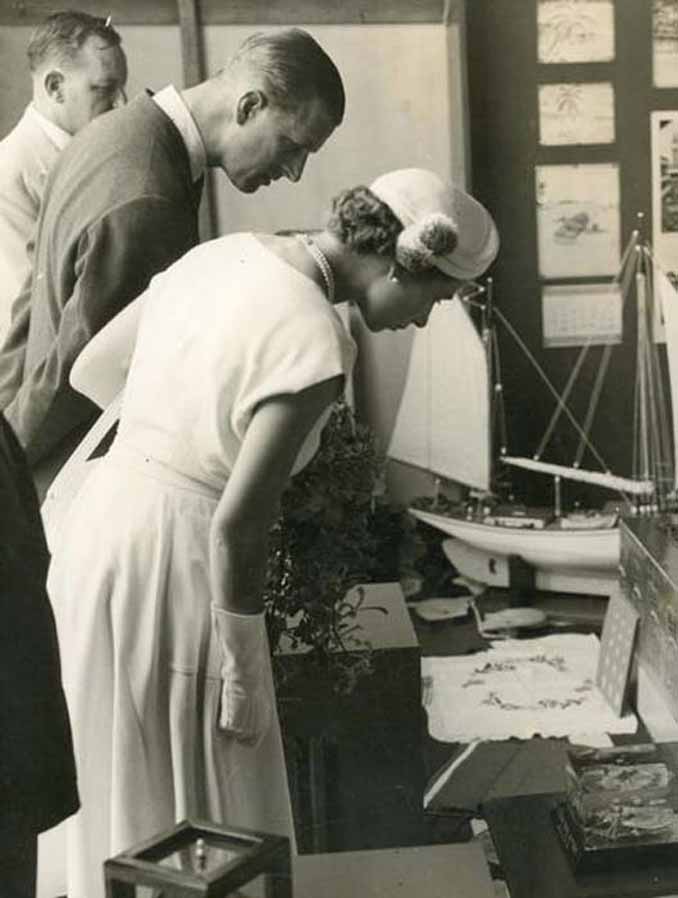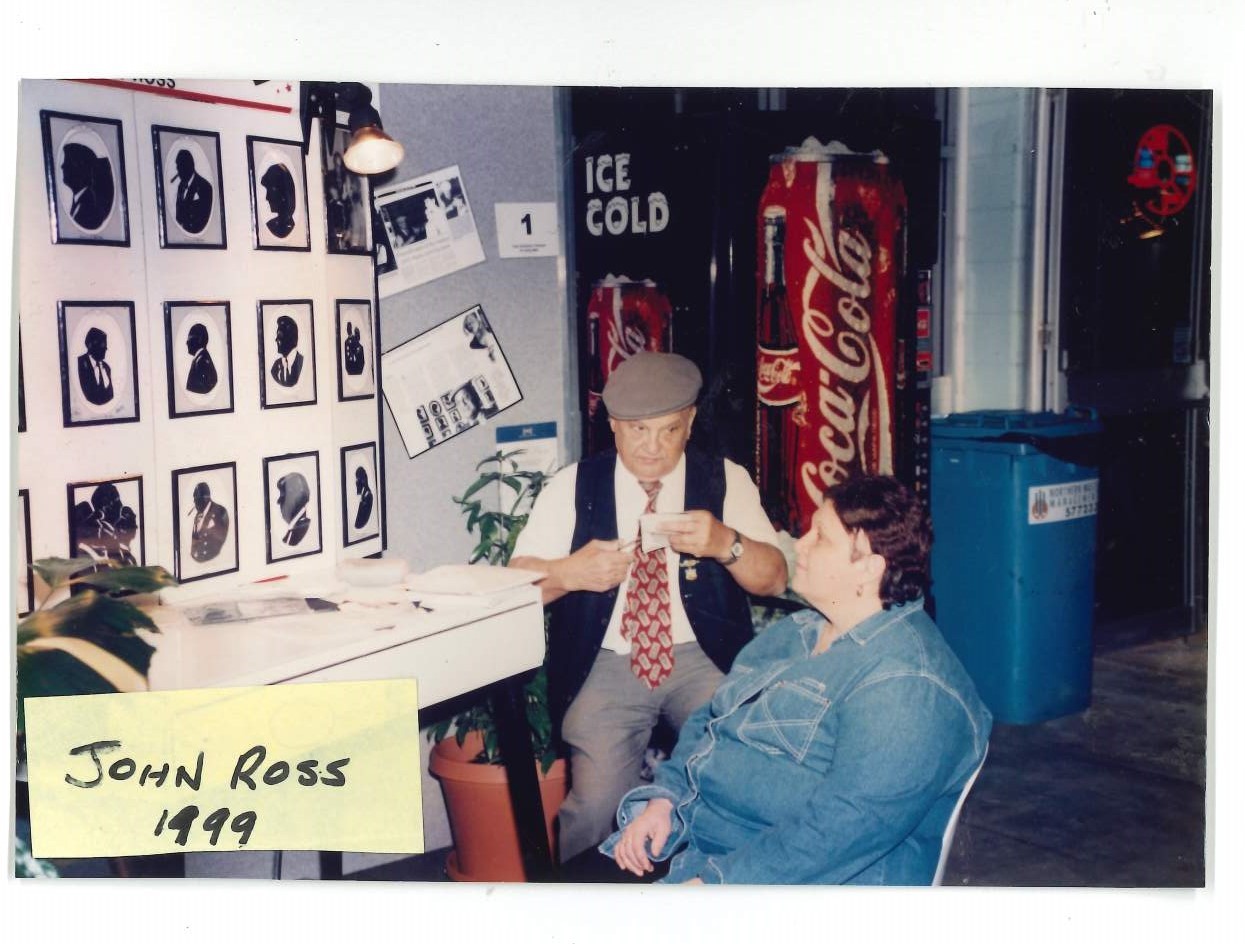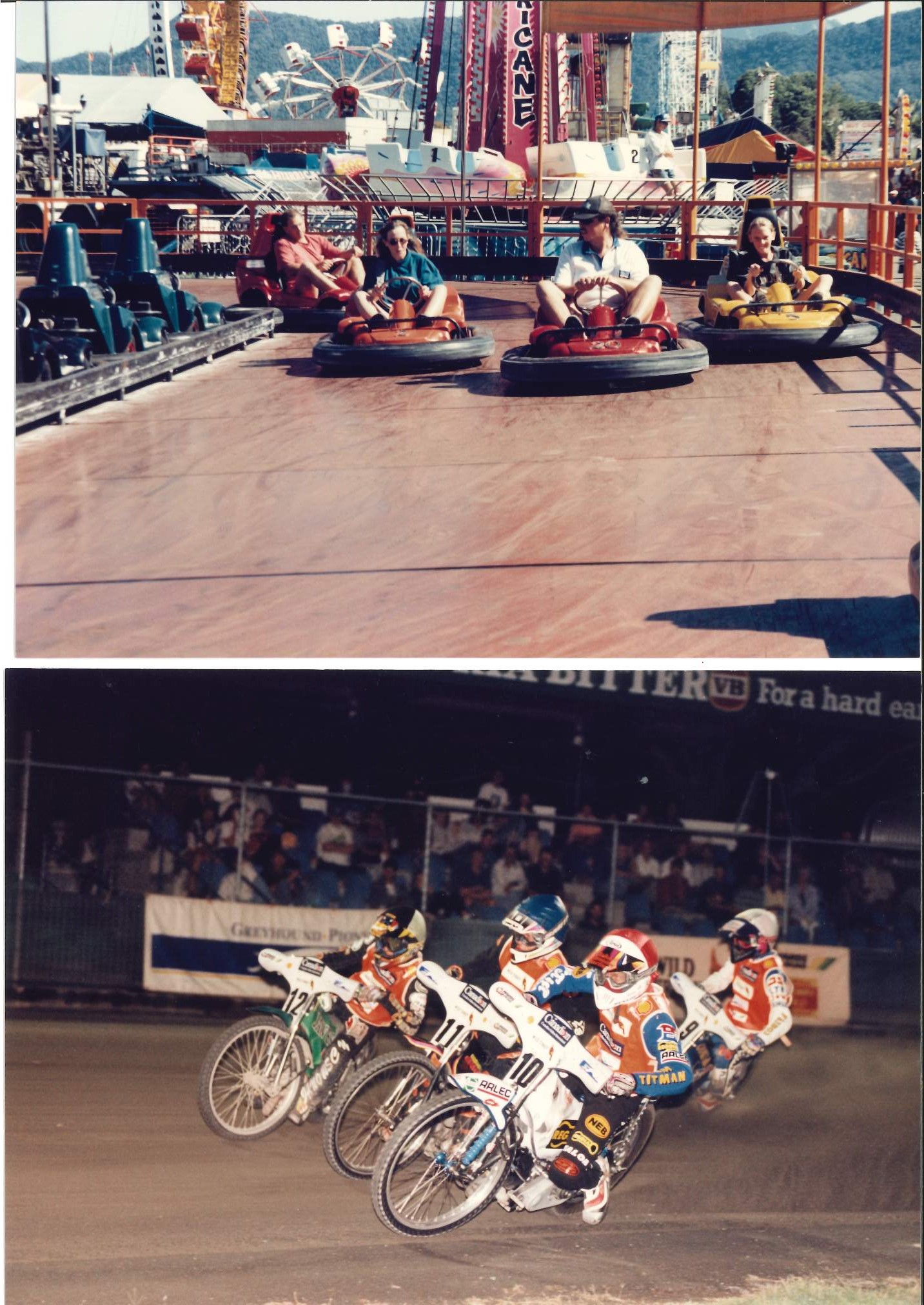THE HISTORY OF THE CAIRNS SHOW
WHERE IT ALL BEGAN…
The first show was presented by the Cairns Agricultural, Pastoral and Mining Association, which took place on September 9th, 10th and 11th in 1891.
It was divided into two sections. The Hall Show displayed a wide variety of exhibits in the Divisional Hall (which later became the headquarters of the Mulgrave Shire Council) for one day and two-night sessions. Judging of cattle, pigs, poultry and the traditional horse events provided the two-day program for the outdoor segment.
The first Cairns show-ground was a twelve-acre reserve between James and Thomas Street, adjacent to the two-mile peg on the original rail line running north from Cairns. One hundred and sixty-one pounds and nine shillings was initially spent on grubbing and clearing, fencing and other permanent improvements. The outstanding success of the Show justified the expenditure. The 1891 Cairns Show was officially opened during the first evening of the Hall Show by the Mayor of Cairns, Mr A J Draper, in front of a crowd of three hundred.
Shows in that format continued at the same locations until 1899 when a portion of property known at the time as Pryn’s and adjoining the original hotel at the “Four-mile,” was procured. Part of this site is the current location of the Woree Tavern on Mulgrave Road.
The public traveled considerable distance by horse and sulky to attend the Show at the new location which, in those days, was well out of town. Most traveled on regular train services from Cairns and Gordonvale, provided by the Cairns Mulgrave Tramway, during the first few years at the new location. Attendance on the first day in 1903, reached 1,000, increasing to between 1,200 and 1,300 on the second day. Paying a fee of six shillings per foot frontage in 1905, Abdul’s Sideshows were the first to operate in conjunction with the show.
A NEW LOCATION…
Following lengthy discussions and renewed public interest, the Association’s activities were revived and a Show was held in 1916 on September 21st and 22nd at the Woree Racecourse. An attempt to include a Hall Show in the Hibernian Hall at the corner of Lake and Florence Streets the same year failed through lack of interest and entries.
Incidentally, the first mention of the committee’s interest in the Parramatta Park Sports Reserve, which is the current Show site, was made in President W.J Houston’s Annual Report, presented in December of 1921. Shows were held at the Racecourse again in 1922 and 1923, before the show in 1924 proved to be the last held venue, and the last in that chapter of the Association’s History.
A NEW BEGINNING…
It was a little embarrassing that a town the size of Cairns did not have an annual Show. Innisfail, Malanda and Ravenshoe, all with much smaller population were able to boast flourishing Show Societies. Cairns Mayor, Mr W A Collins, called a public meeting on February 24th 1931, in an attempt to revive the Cairns Show. A committee was subsequently formed with Mr R F G Fogarty as President, and plans immediately made for a Show to be held at Parramatta Park on July 29th and 30th, 1931.
At that time the Parramatta Park Sports Reserve consisted of a small area of usable ground, most of which nad been filled by dry waste. Mangrove swamp skirted the ground to the south and to the west and high tides still invaded the narrow fringe areas. However, the committee successfully negotiated an agreement for shared use of the reserve as a show-ground.
Following several sizable donations, a contract was immediately arranged with local builders T B O’Meara and Sons for the construction of a pavilion at a cost of £650. Fogarty Hall was built where the Kevin Whouley show-bag pavilion presently stands.
Urgently needed fill material for the tidal southern part of the showgrounds was provided by the Cairns Harbour Board and the Cairns Council. Local businesses made lorries and drivers available, and coupled with the untiring efforts of the committee and a sizeable army of volunteers, the first stage of an all-important on-going fill program began.
Sponsorship reached a level far beyond expectation during those years of economic depression, and extended beyond providing, prize money for an extensive program in the main arena.
The largest Regional Show was a resounding success, returning a net profit of £ 1091/16/2. It also laid the foundation for the Cairns Show to develop into the best regional show in Australia.
A BLOODY CONFRONTATION…!
What became known as the “Battle of Parramatta Park” occurred on the morning of Sunday, July 17th, 1932 in the midst of the depression. About one hundred and eighty unemployed drifters, who for some time had been camped in the sheltered areas including dog kennels and poultry pens refused to leave the grounds to allow preparations for the show. Despite repeated requests and offers of reasonable assistance for them to vacate the grounds to allow the show to proceed, the squatters remained defiant. As a last resort, on the Sunday morning prior to the show, several hundred townspeople from all walks of life joined the committee at the entrance gates.
After a brief address by the Mayor, Mr W A Collins, it was unanimously decided to evict the squatters from the ground, by force if necessary. Aware of the intent of the townspeople, the squatters armed themselves with a variety of makeshift weapons, determined to continue their defiance. The local police had also been made aware of the situation, and in an attempt to control what could develop into a major confrontation, additional officers from as far away as Innisfail arrived to assist.
On entering the ground, a head-on clash eventuated, during which several police, locals and squatters were seriously injured. During the confrontation, which lasted around ten minutes and earned the description of the bloodiest and worst ever in the town’s history, blows were traded between police, locals and the squatters. The more seriously hurt were treated by five ambulance bearers at the scene, while the first ambulance vehicle to leave the ground was said to have conveyed three seriously injured campers for hospital treatment.
Private cars ran a shuttle service conveying injured locals either to the hospital, or to the Ambulance Centre for attention to what were, in the main, serious head wounds.
Sheer weight of numbers forced the uninjured campers out of the grounds. The Mayor insisted that unless the squatters left the grounds immediately and the town by late afternoon, he would have no hesitation in calling on the assistance of the townspeople again. The uninjured were allowed to return in small groups to retrieve their belongings.
Several of the campers were hospitalised and later charged with a variety of offences. Meantime, preparations were hurriedly completed and the first three-day show went ahead on July 19th, 20th and 21st. Despite the lack of preparation time and the preceding events, it was an outstanding success.
MAJOR DEVELOPMENTS…
The year of 1936 was of major significance in the history of the Cairns Agricultural, Pastoral and Mining Association. Both the Percy Pease Pavilion and the Grandstand named in honour of Mr David Headrick, (Show President 1932 – 1946) were used for the first time. Even more important, was the granting of the lease of Parramatta Park to the Association, for a twenty-year term.
Local business firms including A J Draper, H M Svendsen, H R Kennedy, Armstorng Ledley and Stillman, Cummins and Campbell, Samual Allen and Sons, Bolands Pty Ltd, Alfred Taylor Pty Ltd, The Gas Company, Palings Music Store and Cairns Timber Limited all provided wonderful displays in the available pavilions.
Increasing demand for the early types of wireless was fuelled by mounting concerns with news broadcasts of what appeared an imminent war. This triggered further demands for display space.
Although World War Two had broken out in 1939, the Armed Forces took control of the show-ground in early 1941. The show in July of that year went ahead regardless. Arrangements were made with the military authorities for the troops to be relocated to allow the show to proceed.
Additional ground had been reclaimed, more permanent structures added and support from the townspeople and those of surrounding areas increased to new heights each year. However, the show of 1941 was the last until peace was declared. It resumed in July, 1946.
ENTERTAINMENT, SOCIAL ACTIVITY & HIGH FASHION…
The resumption Show in 1946 drew record crowds, proving once again the show’s unmatched popularity as both a source of entertainment, and a hub of social activity. People traveled from a wide area to the north and south, the Tablelands and further West. Entries in an expanding catalogue of events and classes were also drawn from an ever-increasing distance. Strong support was received for the Dairy Section, while entries in the Fat Cattle Classes were drawn from as far as Wrotham Park Station, to the north of Chillagoe.
From the earliest years of the annual show, people of all walks of life somehow managed to put aside enough money to enable them not only to attend the show, but to dress in the finest clothes they had at their disposal. Those that could afford the additional expense helped frock salons and tailors to increase their incomes markedly, by purchasing a new show outfit to join in what may well have been described as a “Fashion Expose”.
Special arena attractions provided additional variety to the traditional equestrian and jumping events presented in the arena. The extremely popular and superbly trained Cunningham Rangers featured in immediate pre-war, and early post war years.
Trotting had formed part of the arena program from the show’s beginning although progressing through various stages and forms. During the nineteen thirties, William Trimm and his wife traveled the show circuit from the northern part of New South Wales through to Cairns, bringing with them several horses that had raced successfully at the Brisbane Exhibition.
The inclusion of trotters brought to Cairns by the professionals traveling the circuit saw the sport become more and more popular. This led to the formation of a Trotting Club in Cairns in the early part of the 1950’s. Trotting remained one of the favourite arena events until well into the 1990’s when trotting was eventually phased out of the program.
Steer riding was also included for a few years during night sessions with the additional novelty provided by what were known as “chariot races”. A single drawbar from the chariot was attached to a device girthed to the steer’s back. A slip pin enabled the steer to be released at the end of the race. Collisions were frequent, and with the total absence of suitable safety fencing around the arena, let’s just say that luck prevailed.
Jimmy Bartley from Myola, who worked bullock teams hauling timber for many years, had an enormous Friesian bullock in his working team called Whiskey. For a few post war years, a challenge was issued with a considerable cash prize, to anyone interested in trying to stay aboard the bullock for ten seconds. Many tried, but none succeeded during Whiskey’s years at the Cairns Show. Miles Gallagher from Charters Towers lasting longest of the challengers by staying aboard for around eight seconds.
A RIGHT ROYAL OCCASION
The Cairns Showground played host to the Royalty during a brief visit of Queen Elizabeth and Prince Phillip to the city in 1954. Children were assembled on the arena and thousands gathered to catch a glimpse of the Royal couple. After the Royals departed, most locals remained to join a variety of events involving school children to mark the celebration of the occasion.
Another Major Achievement
The De Jarlais Pavilion was the next major addition to the permanent structures on the showground. With aid of countless hours of voluntary labour the pavilion was built at an original cost of $64,000. Officially opened on April 15th 1967, the building has since undergone major improvements with a extensive upgrade and expansion prior to the 1990 show.
Major alteration was made to the arena perimeter in 1973 in readiness for the introduction of night harness racing which began on June 1974. The track distance increased from the original 440 yards to 720 metres. With the closure of night harness racing however, the track distance was again changed to the current 520 metres.
During the nine years of Mr Fred Moule’s lead as the Association’s President, which began in 1978, improvements were made to the surfaces of the many pedestrian ways and streets on the show-ground. Sealing of all road surfaces has proved enormously beneficial to patrons and exhibitors, and has added significantly to the Cairns Showground’s recognition as the best regional show in Australia. The Fred Moule Pavilion, which replaced the Percy Pease and the Stillman Trade Pavilions, is the most spacious and modern on the grounds.
CAIRNS SHOW TODAY…
The Cairns Show is Australia’s Largest, Regional, Agricultural Show attracting approximately 70,000 visitors across the three-day event annually.
In 2014 a crowd of 79,682 people attended the Cairns Show which makes it the largest community event in Cairns. During the three days of the Show more than 400 local industries promoted their products and services.
- 2018 attendance: 73,375
- 2019 attendance: 74,884
- 2020 numbers and figures were expected to rise. Unfortunately, due to the COVID 19 pandemic, the 2020 Cairns Show was cancelled, and in 2021 figures were significantly impacted.
- 2021 attendance: 58,438
- 2022 attendance: 69,691
- 2023 attendance projection: 75,000
A FACILITY FOR THE CAIRNS COMMUNITY
All profits from the Show are applied to improvements and maintenance of the showground facility for the community of Cairns. Over the past 8 years more than $2 million has been spent improving the Showgrounds infrastructure and facilities. This valuable community asset, last valued at over $33 million, has been developed and is maintained at no cost to the Cairns community.
This has been achieved through the voluntary committee and associated organisations giving of their time to complete most of the works. The present Show Committee and committees over the past 110 years have given tens of thousands of hours of their time for the benefit of the local community.
Information collated from the Cairns Agricultural, Pastoral and Mining Association.
Thank you to all who contributed!
Last updated: April, 2024
Vale Her Royal Majesty Queen Elizabeth II
In a time of mourning we, with all the members of the Commonwealth, express our sincere condolences to the members of the Royal Family.
The longest reigning Monarch in British history, the Queen’s selfless dedication to duty and service has inspired generations of people over the past 70 years.
Today, we take a moment to reflect on the past to March 1954, when Her Majesty the Queen visit the Cairns Showgrounds. While the visit was brief, it was nothing but memorable.
Over 5,000 of Cairns’ 20,000 population came to the Showgrounds to see the iconic Monarch. The crowd was so great in fact, that the temporary grandstand we hired gave way.
A story in the Cairns Post reported on the Queen’s expression of sympathy to those who attended.
” ‘I thank you very much, Mr. Mayor, for the fine welcome you have given me to Cairns,’ she said. ‘But I am concerned and I hope nobody is seriously hurt.’ The Queen was thought to be gracious and kind, and ensured the crowd was okay before proceeding.”
Along with this story, we’re delighted to share a photo of Her Majesty Queen Elizabeth II and Prince Phillip, and Mayor Fulton, examining the exhibition at the Cairns Showgrounds in 1954.
Photographer: Unknown
Image sourced from: Cairns Historical Society
Information sourced from: the Cairns Post and Cairns Museum.









